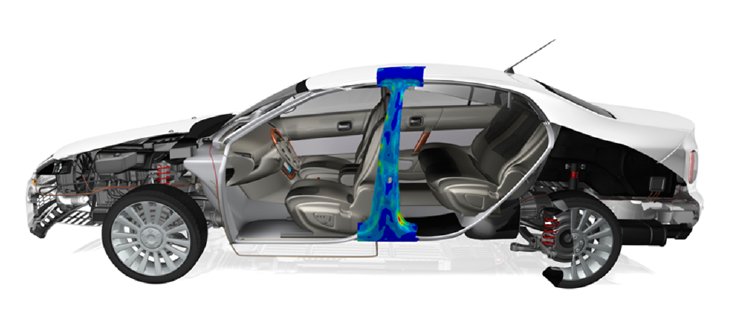Virtual Performance Solution provides automotive manufacturers with a viable solution to improve passenger safety without slowing down new car developments. As exemplified by the Vehicle Safety Simulation department at Audi, real prototypes can be drastically reduced or eliminated completely.
Using a common core model for their simulations, engineering teams from various departments and from different geographical sites can collaborate efficiently towards the creation of virtual prototypes that can be used to predict the future behavior of parts or products in all domains of performance.
By taking account of manufacturing effects and the coupling between different physics, even at very early stages of the design process, manufacturers significantly improve their process efficiency; decreases the number of real prototypes built and tested and, thereby reduce product development costs and time-to-market.
Virtual Performance Solution has been developed to greatly facilitate and accelerate multi-domain optimization and to offer manufacturing companies in all industries the capacity to test and improve their future products. Depending on the industry, domains of application may include structural stiffness and strength, crash, occupant safety, NVH & interior acoustics, comfort, , durability, and high velocity impact.
Thanks to a new execution scheme that supports Multi-Model Coupling, the new version of Virtual Performance Solution is simpler to set-up, offers easier task submission, and delivers significantly faster calculations. Distributed Memory Processing (DMP) has been complemented by an alternating job execution per model, reducing processing time by 20 to 30%.
Virtual Performance Solution offers a new approach for modeling adhesive bonding by introducing special 3D connection elements. These enable a more precise modeling of assembled parts so engineers can more accurately predict behavior in all performance domains, including crash, NVH, stiffness and strength.
The latest release includes an enhanced Finite Pointset Method (FPM) module including turbulence models for gas flow. The module enables increased precision in the simulation of even the most complex airbag systems, notably curtain airbags.
Virtual Performance Solution also comes with improvements for NVH assessment. A new method to evaluate Random Response enables vehicle engineers to achieve a more consistent vehicle by providing more precise prediction of how different road loads and other conditions influence the performance of parts or products. Furthermore, a new scheme for non-linear transient implicit calculations is added to improve the accuracy of durability and strength predictions.
For more news or information about Virtual Performance Solution, please visit www.esi-group.com/VPS
For more news or information about ESI solutions, please visit www.esi-group.com


